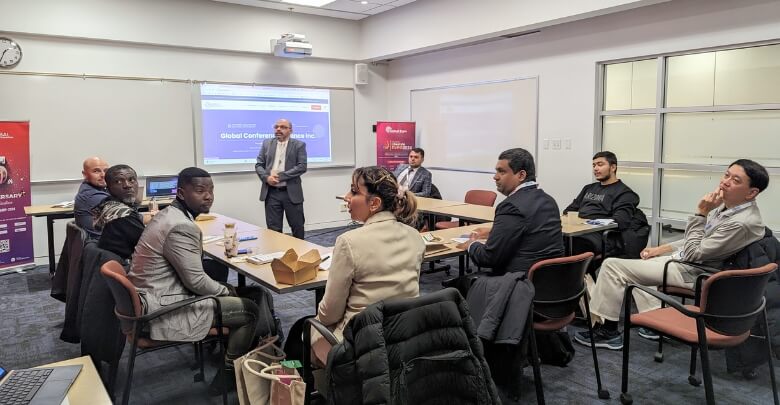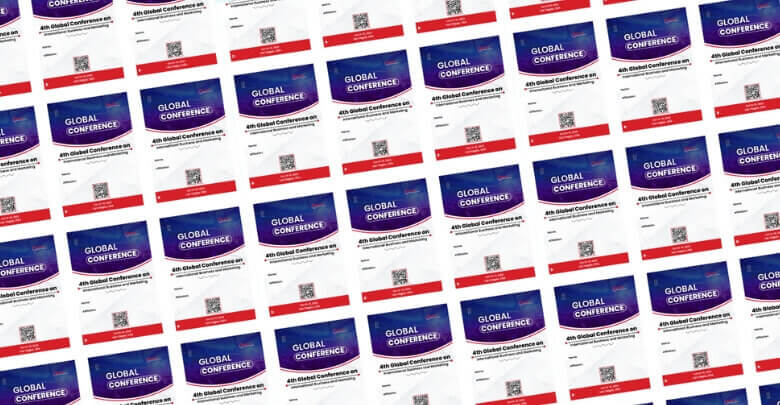Organizing a conference can be a daunting task, especially when managing the logistics of large groups of attendees. One crucial aspect of conference management is the organization of name tags. Name tags are vital in identifying attendees and facilitating networking and communication between attendees, speakers, and organizers. Do you know how to organize name tags for conference?
Organize name tags alphabetically by last name or by registration type, like speakers or attendees, and display them on tables or racks for easy access. Ensure the tags are clear, with the attendee’s name, title, and organization, and use durable holders with lanyards or clips. Prepare extras and have blank tags or a small printer on-site to handle any last-minute changes or errors.
This article will provide a step-by-step guide on how to organize name tags for conference and summarize the key takeaways. So, stay tuned by reading the entire content.
Importance of Organized Name Tags in Conference
A well-organized name tag showcases the efforts of a conference organizer. The importance of organized name tags is undeniable. Well-organized name tags speed up the registration process, reducing wait times and avoiding confusion. This efficiency sets a positive tone for the event.
Name tags make it easy for attendees to identify and connect with others. It is important to organize conference name tag for large conferences where face-to-face introductions are crucial. For events with multiple sessions or tracks, name tags can include relevant information such as session codes or attendance tracking, aiding in smooth transitions between sessions.
In emergency cases name tags can help staff quickly identify attendees and provide necessary assistance. Organizers can use name tags to communicate important information, such as meal preferences or special needs if indicated during registration.
organized name tags contribute significantly to the efficiency, professionalism, and overall success of a conference, enhancing both the logistical aspects and the attendee experience.
How to Organize Name Tags for Conference?
Organizing name tags for a conference is crucial for smooth interactions and efficient check-ins. This might involve collecting data through registration forms or pre-conference surveys. There are several steps involved in organizing name tags for conferences. From collecting attendee information to designing and providing the name tag, several actions are required. Let’s find out more about how to organize name tags for conference.
Determine the Purpose and Requirements
The initial step in organizing name tags for a conference involves systematically and thoroughly determining the event’s purpose and requirements, emphasizing gathering relevant information and analyzing it objectively.
Identifying goals is essential to this process, as it helps organizers understand what they hope to achieve through the conference. This can include anything from increasing brand awareness to networking opportunities for participants.
Identify these goals early on, as they will inform many decisions made throughout the planning process. Analyzing the audience is another crucial part of determining the purpose and requirements of the conference.
This involves gathering information about the attendees, including their demographics, interests, and professional backgrounds. The information can help organizers tailor the conference to the needs and interests of the attendees, ensuring that it is relevant and engaging for everyone.
Collect Attendee Information
Gathering attendee information can be likened to assembling puzzle pieces, as each piece contributes to the overall picture of the conference’s demographic makeup and interests. As such, before creating and printing name tags for a conference, collect essential information from attendees.
Here are some key considerations to make when collecting attendee information:
- Determine the Type of Information to Collect: Collecting too much information can overwhelm attendees and may lead to data privacy concerns. Therefore, determine the type of information necessary for the conference’s purpose and requirements and organize a checklist for the conference attendees.
- Decide on the Registration Process: The registration process should be user-friendly and simple to understand. Attendees should know what information is required, how to fill out the registration form, and how to submit it. Additionally, the registration process should be secure to protect attendees’ data privacy.
- Use an Online Registration System: Online registration systems save time and resources and make collecting, managing, and analyzing attendee information easier. They also provide a convenient platform for attendees to register and access their information.
- Communicate the Importance of Accurate Information: Accurate information is essential when creating and printing name tags. Therefore, communicate the importance of providing accurate information to attendees.
Create and Print Name Tags
When creating and printing name tags for a conference, use a template to ensure consistency and efficiency. This can help to avoid errors and save time in the production process.
Printing on durable paper or cardstock can ensure that name tags last throughout the event and maintain a professional appearance. Apart from printing paper or cardstock, you can also design posters for the conference. While printing posters for conferences, you should choose the right place to print the posters.
By following these simple steps, organizers can create effective and professional name tags for their conference attendees.
Use a Template For Creating Name Tags
Utilizing a standardized template for creating name tags can streamline the conference registration process, allowing attendees to identify themselves and connect with others in their field quickly. Design options for name tags can vary widely, but choose a clear, easy-to-read template with all the necessary information.
Many conference organizers opt for a simple and professional design, often incorporating the conference logo and attendee name in bold lettering. Printing tips should also be considered when choosing a template, such as selecting an easily legible font size and the type and ensuring that the name tag dimensions will fit in the holder or lanyard provided.
Once the template has been selected and customized with attendee information, print on durable paper or cardstock to ensure the name tag lasts throughout the conference. This helps attendees avoid the hassle of constantly re-printing their name tags, reduces waste, and promotes sustainability.
Investing in a higher quality paper or cardstock can also add a professional touch to the conference experience. By using a template and printing on durable materials, conference organizers can set the stage for a successful event that promotes networking and engagement among attendees.
Print on Durable Paper or Cardstock
Like a sturdy foundation for a grand castle, printing on durable paper or cardstock fortifies the name tag, ensuring it endures the conference’s rigors and enhances the event’s professional image. When printing name tags, consider the material options and choose the best one for the conference. Opt for paper or cardstock that is thick, resilient, and resistant to tearing, smudging, or curling.
Printers commonly offer various paper options, including glossy, matte, or coated, which can affect the quality of the print. It is advisable to test print on a sample before committing to a specific paper or cardstock. Consider the paper board size for name tags since conference name tags are not similar to conference badge sizes.
Printing tips are also essential to consider to ensure the name tags come out looking clean and professional. Avoid using low-quality ink for printers, which can result in blurred or smudged prints.
Adjust the settings of your printer to the highest resolution and quality possible. Additionally, proofread the content on the name tags several times before printing to avoid errors. By taking these precautions, you can produce high-quality, durable name tags that will add a touch of professionalism to the conference.
To organize name tags for distribution, consider grouping them alphabetically or by registration type. This will make it easier for conference staff to distribute them efficiently and avoid confusion.
How To Organize Name Tags for Distribution?
To efficiently distribute name tags at a conference, a systematic approach to organizing them based on attendee categories can be implemented. This approach involves the following steps:
- Categorize attendees, such as speakers, sponsors, exhibitors, or general attendees, based on their role or affiliation.
- Assign a unique identifier to each category, such as a color or symbol, and print it on the name tag.
- Sort the name tags by category and arrange them alphabetically within each category.
This method of organizing name tags streamlines the distribution process and helps attendees easily identify each other’s roles and affiliations. After the name tags have been organized, they can be distributed to attendees before or at the start of the conference.
To ensure a smooth distribution process, have a designated area or person. This can be a registration desk, booth, or volunteer responsible for handing out the name tags. Following these steps, attendees can quickly and easily receive their name tags and begin networking at the conference.
Distribute Name Tags to Attendees
One effective method for distributing identification badges to conference attendees is to designate a specific location or individual responsible for facilitating their distribution, ensuring the process is efficient and organized.
Design options for this distribution location could include a registration table or booth, which can be set up near the entrance of the conference venue. This allows attendees to quickly and conveniently obtain their name tags upon arrival without searching for them throughout the venue.
Another option is to distribute name tags on-site by having a designated staff member or team of volunteers move throughout the conference venue to distribute name cards to attendees who have not yet obtained them. Conference name tags usually come with clip, pin, or adhesive backing, unlike badges using conference badge ribbons to hang around the neck. Therefore, assigning a person would bring more comfort to the attendees. This method can be particularly effective for conferences with many attendees or those with multiple registration locations.
Regardless of the chosen distribution method, ensure attendees know when and where to obtain their name tags to minimize confusion and delays. By implementing a well-organized and efficient distribution system, conference organizers can ensure that attendees have a positive experience from the start of their conference experience.
Frequently Asked Questions
Here are some similar questions and their answers related to organizing name tags for conferences. You will find the answers to commonly asked questions on this topic.
What Information Should Be Included on a Conference Name Tag?
A name tag should include the attendee’s full name, title or role, organization or affiliation, and, optionally, the attendee’s country or city. Clear and legible fonts are important to ensure easy readability from a distance.
What Are the Best Materials to Use for Conference Name Tags?
Use durable materials like laminated paper or plastic to prevent wear and tear. Badge holders with lanyards or clips are commonly used as they are convenient and comfortable for attendees.
How Can I Make Name Tags Environmentally Friendly?
Use recyclable materials, such as paper or biodegradable holders. Encourage attendees to return their name tags at the end of the conference for reuse or proper recycling.
Should I Include QR Codes on Name Tags, and What Are Their Benefits?
Including QR codes can be beneficial as they can link to attendee profiles, schedules, or contact information, facilitating easy networking and access to conference resources. This adds a tech-savvy touch and enhances the attendee experience.
What is the Best Way to Ensure Correct Spelling and Details on Name Tags?
Use the information provided during registration, and allow attendees to review and confirm their details beforehand. Sending a pre-conference confirmation email can help catch any errors early.
Final Notes
Organizing name tags for a conference might seem like a small detail, but it plays a crucial role in ensuring a smooth and professional event. From design to distribution, getting it right improves the attendee experience and encourages effective networking.
If you’re wondering how to organize name tags for conference, the key is careful planning. Focusing on readability, using durable materials, and having a system in place for last-minute changes can make all the difference.
With these steps in mind, you’ll create a seamless process that leaves a positive impression on participants, helping them feel welcome and prepared from the moment they arrive at the event.








